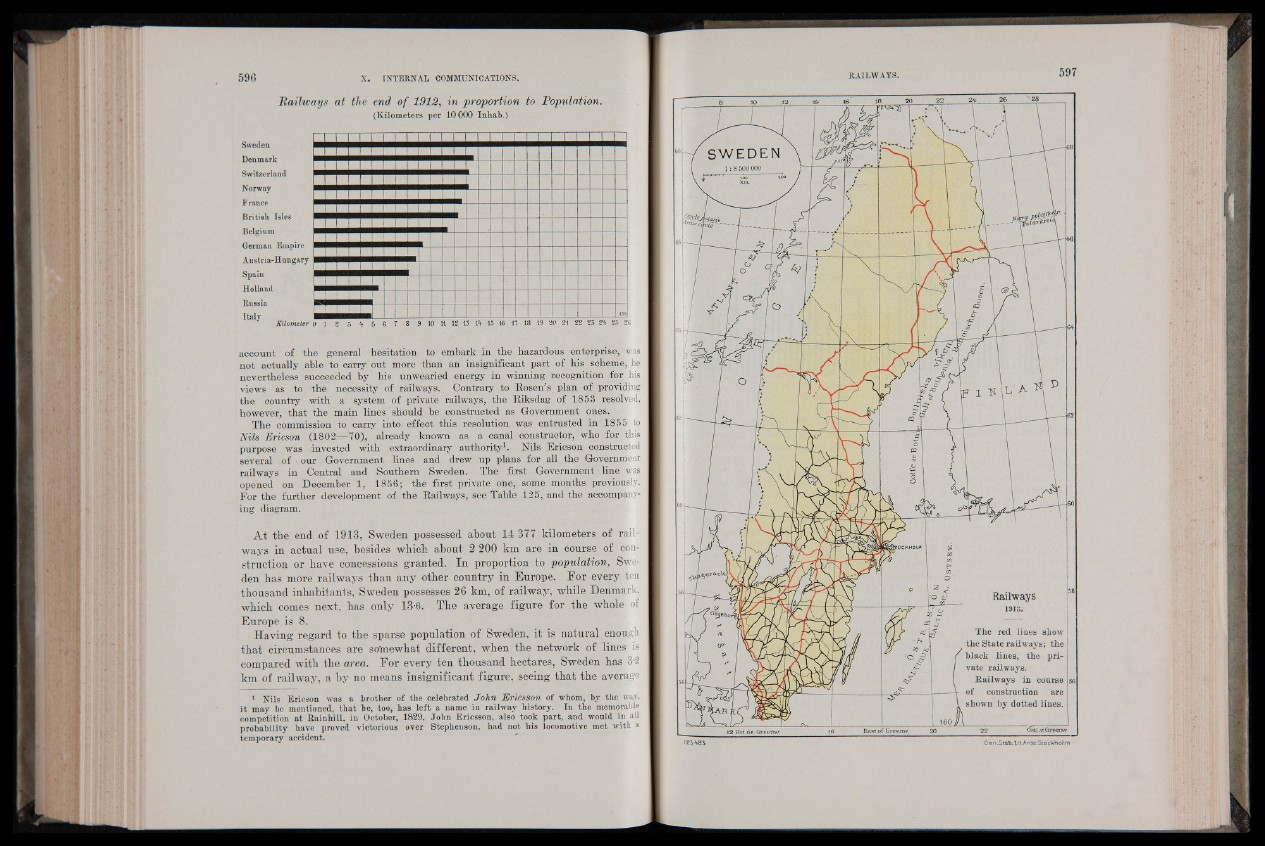
Railways at the end of 1912, in proportion to Population.
(Kilometers per 10000 Inhab.)
Sweden
Denmark
Switzerland
Norway
France
British Isles
Belgium
German Empire
Austria-Hungary
Spain
Holland
Russia
Italy
Kilometer 0 1 £ 2 * 5 - 6 7 8 9 10 11 12 13 1* 15 16 17 18 19 20 21 22 23 2h 25 26
account of the general hesitation to embark in the hazardous enterprise, was
not actually able to carry out more than an insignificant part of his scheme, he
nevertheless succeeded by his unwearied energy in winning recognition for his
views as to the necessity of railways. Contrary to Eosen’s plan of providing
the country with a system of private railways, the Eiksdag of 1853 resolved,
however, that the main lines should be constructed as Government ones.
The commission to carry into effect this resolution was entrusted in 1855 to
Nils Ericson (1802—70), already known as a canal constructor, who for this
purpose was invested with extraordinary authority1. Nils Ericson constructed
several of • our Government lines and drew up plans for all the Government
railways in Central and Southern Sweden. The first Government line twas
opened on December T, 1856; the first private one, some months previously.
For the further development of the Eailways, see Table 125, and the accompanying
diagram.
At the end of 1913, Sweden possessed about 14 377 kilometers of railways
in actual use, besides which about 2 200 km are in course of construction
or have concessions granted. In proportion to population, Sweden
has more railways than any other country in Europe. For every ten
thousand inhabitants, Sweden possesses 26 km, of railway, while Denmark,
which comes next, has only 13-6. The average figure for the whole of
Europe is 8.
Having regard to the sparse population of Sweden, it is natural enough
that circumstances are somewhat different, when the network of lines is
compared with the area. For every ten thousand hectares, Sweden has 3-2
km of railway, a by no means insignificant figure, seeing that the average
1 Nils Ericson was a brother of the celebrated John Ericsson of whom, by the way,
it may be mentioned, that he, too, has left a name in railway history. In the memorable
competition at Rainhill, in October, 1829, John Ericsson, also took part, and would in all
probability have proved victorious over Stephenson, had not his locomotive met with a
temporary accident. 12 E s t de Greenw. E a s t o f Greenw.
i The red lines show
the State railways; the I black lines, the private
railways.
Railways in course
of construction are
shown by dotted lines.
: dstl.v: Greenw.